Two hours into a muddy hike through Rwanda’s Nyungwe rainforest and though I’ve been barked at by a baboon, crossed rivers of fire ants and stepped over a foot-long centipede, I have yet to see any chimpanzees, which is the reason I’m here.
My guide and our team of trackers are on the path ahead, armed with machetes, rifles and a walkie talkie. We’re looking for an alpha male called Kuyu. His morning calls echo in the distance and my guide tells me we’re not far from him. I hope he’s right. I am covered in Mosquito repellent clothing, I’m hot, tired and my enthusiasm is waning.
‘Look up,’ says my guide, and he gestures at a dark shadow that glides across the tree canopy above. We’ve found them! A tracker grabs me with one hand and with the other swings his machete and cuts through the bush. I lift the hood of my jacket over my baseball cap and pull the drawstring cords tight before I dive into the overgrowth. High up above I spot one chimpanzee, then two, three, four. Kybibi, a son of the alpha, comes down for a closer look at his visitors. We’re face-to-face, just ten feet away. I ask the tracker if I’m safe – he assures me I am: ‘Kybibi is a massive flirt.’
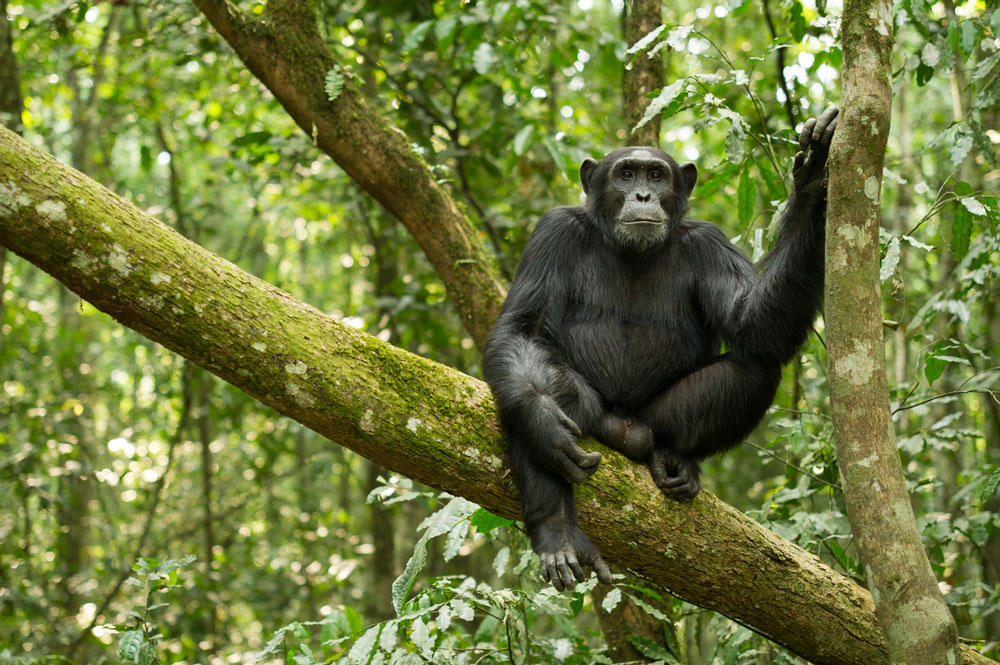
After warming themselves in the morning sun, Kuyu’s family begin to descend gracefully from the treetops, like spiders from a web, and vanish into the bush. We give chase, but chimpanzees are fast and the terrain makes it difficult to keep up. Their calls begin to sound further and further away so we return to the resort, the One&Only Nyungwe House on the edge of the national park. The hotel is in the middle of a working tea plantation and there are brightly clothed pickers dotted throughout the green fields. In the lobby I’m handed a warm tea, the leaves freshly picked.
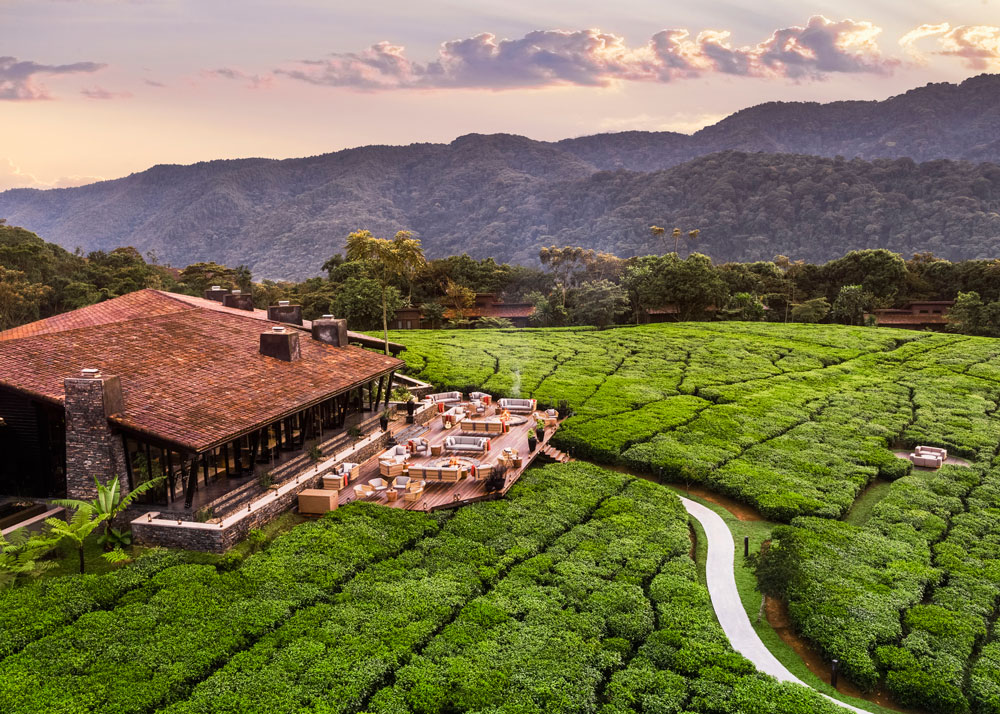
Although there are a dozen primate species in Nyungwe, there are no gorillas – Rwanda’s biggest tourist draw. To see them, I need to travel five hours north the Virunga mountains. The route weaves around the eastern side of Lake Kivu which borders with the Democratic Republic of Congo.
For a moment I forget I’m in landlocked Rwanda. It looks more like Capri. I’m told this is where those who can afford summer holidays in Rwanda come. Lakeside boutique hotels are popping up from the Cleo to Serena to Chateau Le Marara, a giant white castle that would not look out of place in the Swiss Alps, and the country’s first floating hotel, the Kivu Queen. At dusk you can rent a kayak and join the ‘singing fisherman’ as they head out for the evening’s catch, using their chorus to keep their rowing in time.
As I arrive at One&Only Gorillas Nest in the foothills of the Volcanoes National Park, I’m greeted with enormous entrance gates that remind me of Jurassic Park. I start humming the film’s theme tune, but I’m soon drowned out by the raucous sound of beating drums waiting to greet me at the end of the drive.
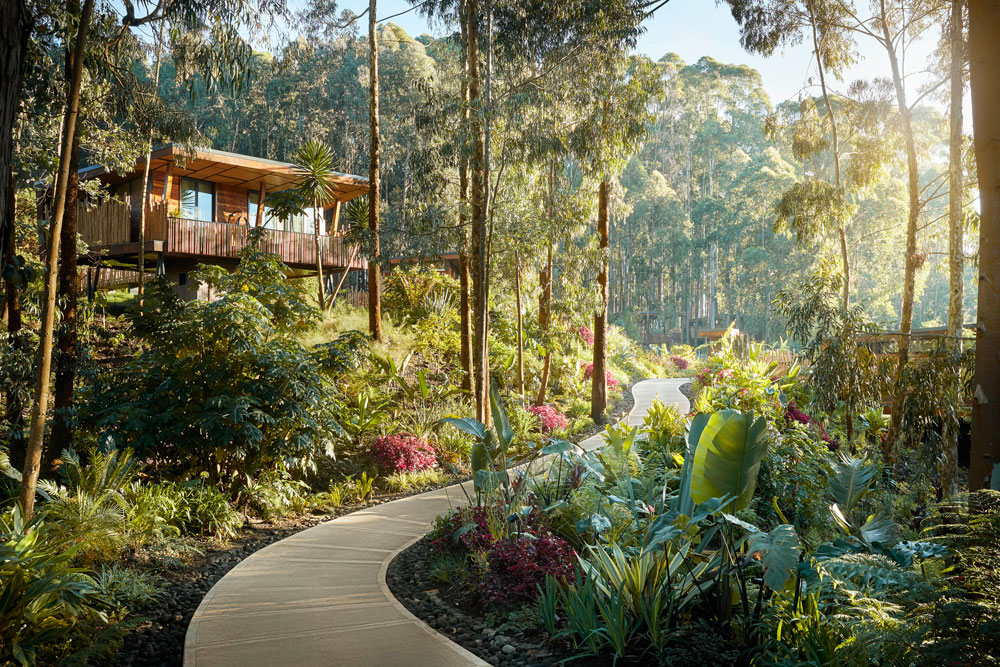
Over a night cap, Dr Julius Nziza, Head Veterinarian of the Gorilla Doctors tells me what to expect on my trek tomorrow. He also tells me how the American conservationist Dian Fossey led a heroic war on poachers which pulled the species back from the brink of extinction. Today, there are just over 1,000 mountain gorillas left in the world – and more than half of those are here. Former poachers now work as trackers – or porters – dedicated to the protection of wildlife.
A permit for gorilla trekking will set you back $1,500, ten times what it costs to spend time with the chimpanzees – but unlike chimpanzees you’re guaranteed to see gorillas. For a small fee you can hire a porter who will offer to carry your bag and help you across rough terrain in search of your assigned gorilla family.
The next morning at ‘Gorilla basecamp’ I’m put into a group of eight – the maximum number allowed when visiting Rwanda’s gorillas. Francois Bigirimana, our expert guide and a close friend of Fossey, tells us we have an hour’s hike ahead of us. Luckily we don’t have to trek too far – at the base of the mountain we come across our first gorillas.

‘Don’t move – he’s about to charge.’ Francois steps back to take my picture, capturing my startled expression and the open-mouthed 400lb mountain gorilla behind me.
The silverback – who’s called Lisanga, Francois tells me – raises himself up high and beats hard on his chest – a sound that can be heard a kilometre away. ‘He’s showing off for his new wife,’ says Francois, gesturing towards a female gorilla in the undergrowth. She doesn’t look that impressed with her new husband – or us.
Francois, who calls himself ‘half-man, half-gorilla’, mimics Lisanga’s grunts as he leads me through the foliage in search of the other 15 members of the Kwisanga (meaning ‘to feel at home’) gorilla family. The noises, apparently, are to let them know that friends are approaching.
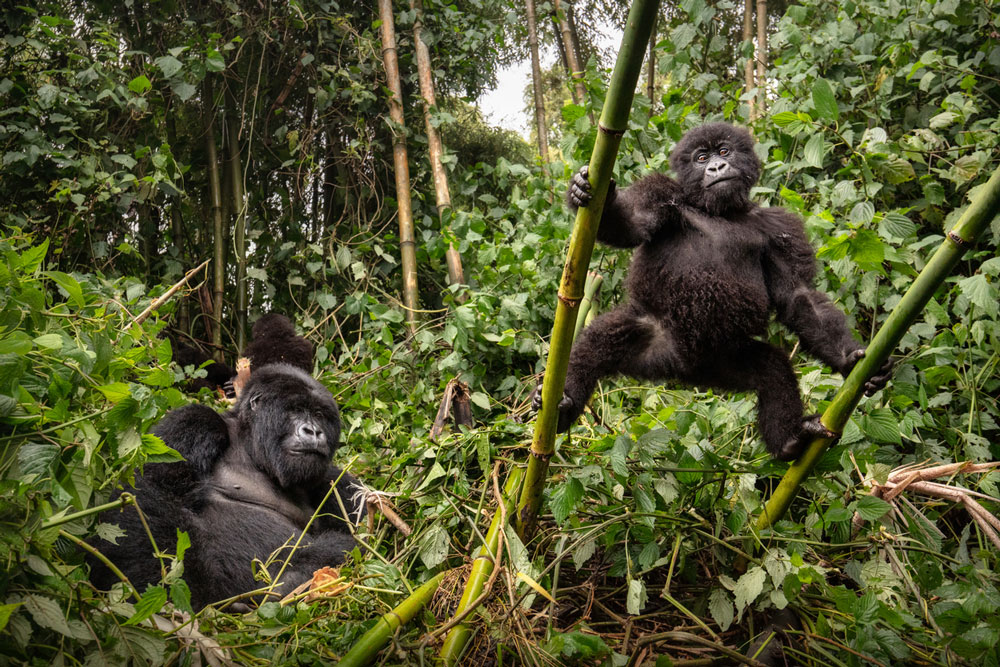
Eventually we meet the Kwisangas: a handful of blackbacks (young males) and females, fluffy babies (which lie across the back of Lisanga’s brother) and the family’s patriarch, a giant silverback called Kigoma. Francois tells me to keep a good distance and for the next hour I watch the females groom giant Kigoma, as the young blackbacks swing from branch to branch and the babies play what looks like a game of chase. Kigoma, cleaned and ready to move, stands tall and stretches, showing off his incredible size – and reminding us why’s he’s in charge.
When I ask Francois if there are still problems with poachers, he tells me ‘no one messes with gorillas any more’. I’m not surprised.
Black Tomato can arrange 8 nights in Rwanda including a curated itinerary with stays at The Retreat in Kigali, One&Only Nyungwe House and One&Only Gorilla’s Nest. For more information see visitrwanda.com

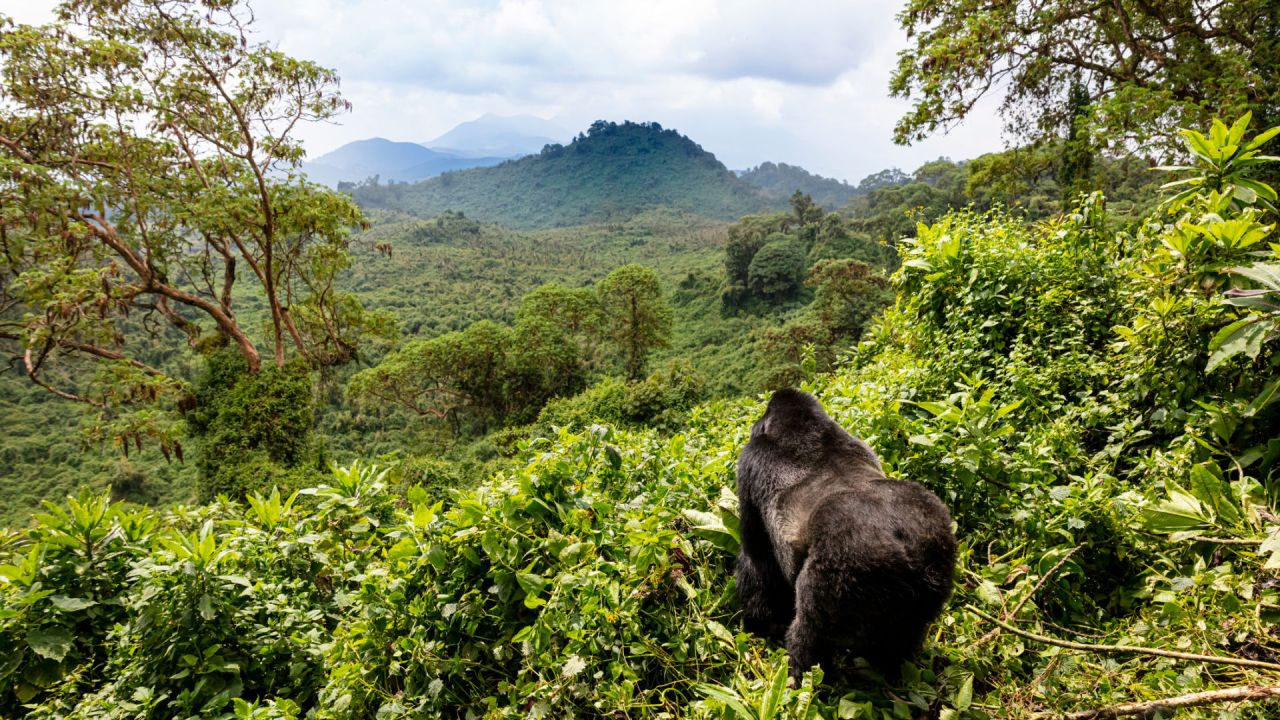





Comments